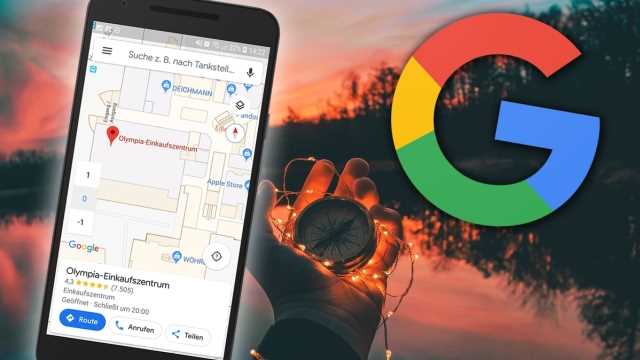Google Maps is one of the most popular map services in the world. Although the application is considered reliable, there are always roads in the app that just don’t exist in reality. Anyone who suspects an error here is usually wrong – because the decision to place the wrong places was actually made deliberately by Google.
Countless streets are listed in Google Maps – so basically a few minor errors would not come as a surprise. However, Google has deliberately built some errors into the map service (via Business Insider), so-called “trap streets”: These are invented, self-named streets and places that often have obvious fantasy names and usually appear in the maps for longer periods of time are included.
The reason for inserting such fake streets and places is bizarre at first glance, but ultimately logical: the company uses the invented addresses as a kind of copy protection or watermark. If an external map service were to copy parts of Google Maps and make the mistake of using the fake roads, Google could easily prove that the service copied unlawfully.
Google Maps: Errors serve as copy protection
Anyone who fears that Google Maps will take them to non-existent roads when driving on their next holiday in Italy can rest easy: the fake roads are mostly small country lanes and dead ends. It would be more difficult if Google sent you to a place that doesn’t even exist: There are also rumors that Google has sometimes added ghost towns to its map service.
This approach to copy protection is not new: Even in larger databases of people, non-existent names/persons are often inserted to prevent data theft. Measures such as these for copy protection are of great importance to Google: After all, the group does not save any money to get the necessary HD recordings for Google Street View, for example.
Google Maps: Not all errors are intentional
Leaving aside the intentional misrepresentations, Google Maps is actually a fairly accurate mapping service that shows the location of streets, buildings, and landscapes in great detail. But Google Maps isn’t free of blunders either; Again and again, attentive users discover one or the other error, which sometimes has strange consequences. For example, a small Norwegian village was flooded with tourists because Google Maps misrepresented the location of a well-known landmark.
Shop recommendation for navigation systems
Offer from BestCheck.de | Prices incl. VAT plus shipping
